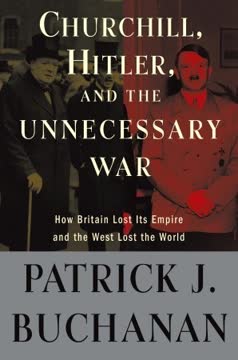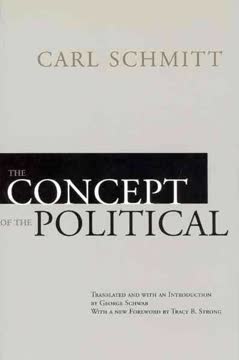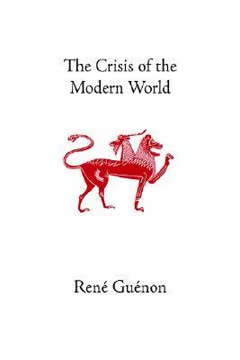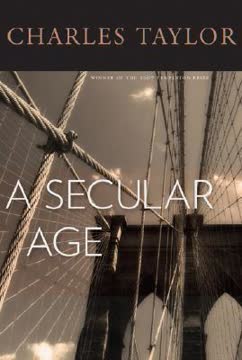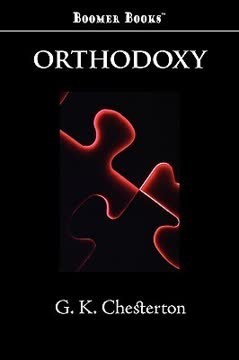Key Takeaways
1. Capitalism's Instability Leads to Servitude
“. . . If we do not restore the Institution of Property we cannot escape restoring the Institution of Slavery; there is no third course.”
Capitalism's inherent flaws. Capitalism, characterized by a few owning the means of production while many are politically free but economically dispossessed, is inherently unstable. This instability arises from the conflict between its moral and legal foundations, which presume a society of free citizens with property rights, and the reality of a vast proletariat dependent on a few for their livelihood. This creates a system where the possessors can grant or withhold livelihood from the non-possessors, leading to insecurity and social strain.
Moral and economic strains. The moral strain stems from the contradiction between laws protecting property as a universal right and the reality of widespread dispossession. The economic strain arises from the insecurity and anxiety imposed on the majority, who lack the means of production and are subject to the whims of the market and the possessors. This combination of moral and economic instability makes Capitalism a transitory phase, destined to transform into a more stable social arrangement.
Seeking stability. The instability of Capitalism forces it to seek a stable equilibrium. This equilibrium can only be achieved by addressing either the restricted ownership of the means of production or the freedom of the dispossessed. The possible solutions are a return to a distributive state with widespread property ownership, a collectivist state with public ownership, or a servile state where the dispossessed are legally compelled to work for the possessors in exchange for security.
2. Defining the Servile State
“That arrangement of society in which so considerable a number of the families and individuals are constrained by positive law to labour for the advantage of other families and individuals as to stamp the whole community with the mark of such labour we call THE SERVILE STATE.”
Compulsory labor. The Servile State is defined by a significant portion of the population being legally compelled to work for the benefit of others. This compulsion, enforced by the State, distinguishes it from voluntary labor motivated by enthusiasm, religious belief, or economic gain. The key is the legal obligation to work, backed by the power of the State, creating a clear division between those who must work and those for whom they work.
Status over contract. In the Servile State, status replaces contract as the basis of social relations. Individuals are not free to bargain for their labor but are bound by law to work under conditions dictated by others. This does not necessarily imply the worst possible conditions, but it does mean a loss of freedom and autonomy. The essential mark of servitude is the withdrawal of a man's free choice to labor or not to labor, compelling him by positive law to labor for the advantage of others.
Not necessarily ownership. The servile condition does not depend on the ownership of the slave by a particular master. A whole class can be rendered servile by positive law, compelled to labor for the advantage of a free class, without direct possession of one person by another. The State guarantees security in subsistence to the unfree and security in property and profits to the free. The distinguishing mark is the legal compulsion to labor, separating the less-free from the more-free in the function of contract.
3. The Historical Roots of Servitude
Slavery is no novel experience in the history of Europe; nor is one suffering an odd dream when one talks of Slavery as acceptable to European men.
Pagan antiquity. The Servile State is not a new phenomenon but a return to a historical norm. In Pagan antiquity, slavery was a fundamental institution upon which society rested. It was taken for granted and not questioned. This was not necessarily based on racial or ethnic distinctions but was often a result of poverty or capture in war.
Human equality. Despite the institution of slavery, there was a recognition of human equality between master and slave. Both were of the same race, and emancipation was a common practice. However, the recruitment of slaves was perpetual, driven by poverty and the rule that the slave bred the slave. This created a society divided into free citizens with property and a mass dispossessed and compelled to labor.
Acceptance of servitude. What is striking about ancient societies is the lack of organized resistance or moral objection to slavery. It was accepted as an alternative to indigence and a necessary part of the social order. This acceptance is crucial to understanding the potential for its return, as it demonstrates that servitude is not alien to the European experience.
4. The Church's Role in Dissolving Servitude
Among the by-products of this experiment, very slowly emerging from the old Pagan world, and not long completed before Christendom itself suffered a shipwreck, was the exceedingly gradual transformation of the Servile State into something other: a society of owners.
No direct attack. The Christian Church, during its rise, did not directly attack the institution of slavery. No dogma condemned it as immoral. However, the Church's influence gradually transformed the Servile State through a slow and complex process. This transformation began with the establishment of great landed estates, or Villae, as the fundamental units of production.
Customary rule. The Villae initially relied on slave labor, but over time, customary rules modified the arbitrary position of the slave. Slaves became rooted to the land, and their produce was fixed at a certain amount, with the surplus left to them. This implied bargain, in the absence of strong public powers, gradually transformed the slave into a serf.
Serfdom to peasantry. By the ninth century, the Roman estate was divided into the lord's domain, land in the occupation of former slaves, and common land. The serf, though legally bound to the soil, gained increasing freedom and rights. By the late Middle Ages, the serf had become a peasant, a free man for all ordinary purposes, buying, selling, saving, and investing.
5. England's Unique Failure: From Distribution to Capitalism
It was not machinery that lost us our freedom; it was the loss of a free mind.
Economic freedom. With the close of the Middle Ages, societies in Western Christendom, including England, were economically free. Property was widely distributed, and co-operative institutions regulated labor to prevent the concentration of wealth. This distributive state, where most families owned land and capital, was a result of centuries of Christian development.
Catastrophe in England. This state of affairs did not survive everywhere. In England, it was ruined by the mishandling of the economic revolution of the sixteenth century. The confiscation of monastic lands, intended for the Crown, instead fell into the hands of a wealthy oligarchy. This oligarchy then systematically dispossessed the peasantry, leading to the rise of Capitalism.
Capitalism before industry. England was Capitalist before the Industrial Revolution. The concentration of land ownership in the hands of a few created a large proletariat, ready to be exploited by the new industries. The Industrial System, therefore, grew from Capitalism, not the other way around. Had property been well distributed, the Industrial Revolution could have been a blessing, but in a Capitalist England, it became a curse.
6. The Illusion of Collectivism
An ideal society in which the means of production should be in the hands of the political officers of the community we call Collectivist, or more generally Socialist.
Two solutions. In response to the instability of Capitalism, two solutions are proposed: Collectivism (or Socialism) and the Distributive State. Collectivism involves placing the means of production in the hands of political officers, while the Distributive State aims to redistribute property widely among citizens. However, the Distributive solution is seen as impractical in a Capitalist society.
Collectivism's appeal. Collectivism appears to be the easier solution for a Capitalist State. It works with the existing machinery of Capitalism, appeals to the appetites it has aroused, and ridicules the memory of a society with well-divided property. The transition from Capitalism to Collectivism seems seamless, with the State taking over industries and providing security and employment to the masses.
The Servile State. However, the attempt to transform Capitalism into Collectivism results in something unexpected: the Servile State. Instead of public ownership, the owners remain possessed, and the dispossessed remain dispossessed. The mass of men still work for the advantage of a few, but with the added security of guaranteed subsistence.
7. Reformers Pave the Path to Servitude
There are two types of reformers working along the line of least resistance—These are the Socialist and the Practical Man.
Three interests. Three main interests drive social change in modern England: the Socialist, the "Practical Man," and the proletariat. All three, in their own way, are contributing to the rise of the Servile State. The Socialist, aiming for Collectivism, finds himself drifting towards servitude.
The Socialist reformer. The Socialist movement is divided into those who see public ownership as a solution to Capitalism and those who love the Collectivist ideal for its order and regulation. Both types, in attempting to transform Capitalist society, are led down the path of least resistance. Confiscation is difficult, but securing human conditions for the proletariat is not.
The "Practical Man." The "Practical Man," lacking a clear understanding of first principles, focuses on immediate solutions to poverty and insecurity. He supports measures that restrict freedom in exchange for security, such as compulsory insurance and minimum wages. This makes him a powerful force in the transition to the Servile State.
8. The Proletariat's Acquiescence
To-day a man fears to speak in favour of some social theory which he holds to be just and true lest his master should punish him.
The people to be reformed. The proletariat, the mass of men in the Capitalist State, are the material upon which social reform is working. Their attitude towards the transformation from free proletarianism to servitude is crucial. Factors influencing this attitude include the memory of economic freedom, the hope of escaping the wage-earning class, and the desire for security and sufficiency.
Loss of tradition. The English proletariat has largely lost the tradition of property and freedom. They think of themselves as wage-earners, not potential owners. The hope of escaping the wage-earning class has also diminished, leading to a sense of permanent proletarian status.
Acceptance of servitude. The overwhelming desire for security and sufficiency makes the proletariat willing to accept the Servile State. They are willing to trade legal freedom for the real prospect of having enough and not losing it. This acquiescence is a key factor in the rise of the Servile State.
9. Servile Legislation in Action
The Servile State is, in industrial England to-day, no longer a menace but something in actual existence.
Employer's Liability. The first example of servile legislation is the Employer's Liability law. This law, while motivated by humane concerns, establishes a difference in status between employer and employee. It compels the employer to pay damages for accidents happening to employees, even if the employer is not directly responsible.
The Insurance Act. The Insurance Act is a more definite example of servile legislation. It compels certain classes of citizens, based on their employment and income, to participate in a scheme providing against illness and unemployment. The duty of controlling the proletariat and enforcing the law is placed upon the Capitalist class.
Minimum Wage. The fixing of a Minimum Wage, while not yet fully implemented, is another step towards the Servile State. By giving legal sanction to a hypothetical Minimum Wage arrived at after discussion within a particular trade, the State is setting the stage for a more comprehensive system of wage regulation. This further entrenches the division between owners and non-owners, with the State acting as the guarantor of subsistence for the latter.
Last updated:
FAQ
1. What is "The Servile State" by Hilaire Belloc about?
- Central Thesis: The book argues that modern industrial society, particularly in England, is inevitably moving toward a new form of slavery—what Belloc calls the "Servile State"—where a majority are legally compelled to work for the benefit of a minority who own the means of production.
- Historical Perspective: Belloc traces the evolution of European society from ancient slavery, through the medieval Distributive State (where property was widely owned), to the rise of Capitalism and its inherent instability.
- Key Argument: He contends that unless property is widely redistributed, society will stabilize not through socialism or collectivism, but by legally enforcing labor upon the propertyless, thus re-establishing a form of slavery.
- Scope: The book combines economic, historical, and philosophical analysis to critique both capitalism and socialism, and to warn of the dangers of state-enforced servitude.
2. Why should I read "The Servile State" by Hilaire Belloc?
- Insight into Modern Society: The book provides a unique and prescient analysis of the evolution of economic systems and the risks of state-enforced labor, which remain relevant in discussions about welfare, labor laws, and economic freedom.
- Historical Context: Belloc offers a sweeping historical narrative that connects ancient slavery, medieval property distribution, and modern capitalism, helping readers understand the roots of current social and economic issues.
- Alternative Perspective: Unlike many contemporaries, Belloc critiques both capitalism and socialism, advocating for a "Distributive State" where property is widely owned, offering a third way often overlooked in mainstream discourse.
- Influence on Later Thinkers: The book influenced figures like G.K. Chesterton and George Orwell, and is foundational for understanding the distributist movement and critiques of both state socialism and unrestrained capitalism.
3. What are the key takeaways from "The Servile State" by Hilaire Belloc?
- Instability of Capitalism: Belloc argues that capitalism, defined by a minority owning the means of production, is inherently unstable and cannot last.
- Return to Servitude: Without a restoration of widespread property ownership, society will stabilize by legally compelling the propertyless to work for the property-owning minority, effectively reintroducing slavery.
- Critique of Socialism: Attempts to achieve socialism or collectivism in a capitalist society will not result in true collective ownership, but rather in a bureaucratic form of servitude.
- Distributism as Solution: Belloc advocates for distributism—a system where property is widely distributed among the population—as the only alternative to both capitalism and the servile state.
4. How does Hilaire Belloc define the "Servile State" in "The Servile State"?
- Legal Compulsion to Labor: The Servile State is defined as a society where a significant portion of the population is legally compelled to work for the benefit of others who own the means of production.
- Distinction from Other Systems: It is not simply a society with inequality or poverty, but one where the law enforces a difference in status between property owners (free) and non-owners (servile).
- Not Just Harsh Conditions: Belloc emphasizes that servility is not about the degree of hardship, but about the kind of legal status—compulsory labor enforced by the state.
- Permanent Social Division: The Servile State is marked by a permanent, legally enforced division between those compelled to work and those who benefit from that work.
5. What are the main historical stages of economic society according to "The Servile State" by Hilaire Belloc?
- Ancient Servile State: European society began with slavery as its foundation, where most people were legally compelled to labor for a minority.
- Medieval Distributive State: The rise of Christianity and gradual social changes led to the dissolution of slavery and the emergence of a society where property was widely distributed among free citizens.
- Rise of Capitalism: In England, especially after the Reformation and the seizure of monastic lands, property became concentrated in the hands of a few, creating a large proletariat.
- Modern Instability: The capitalist state, with its division between property owners and the propertyless, is inherently unstable and leads toward either a return to servitude or a radical redistribution of property.
6. How does Belloc describe the transition from the Distributive State to Capitalism in "The Servile State"?
- Confiscation of Monastic Lands: The dissolution of the monasteries in England led to the transfer of vast amounts of property from the Church to a small class of landowners.
- Rise of Oligarchy: This new class of large landowners gained economic and political dominance, undermining the widespread property ownership of the medieval period.
- Creation of the Proletariat: As property became concentrated, more people lost their economic independence and became wage laborers, forming a proletariat.
- Industrial Revolution's Role: The Industrial Revolution did not cause capitalism, but rather entrenched and expanded the capitalist system that already existed due to earlier property concentration.
7. What are the three possible stable social arrangements Belloc identifies in "The Servile State"?
- Distributive State (Property): A society where property, especially the means of production, is widely distributed among the population, ensuring economic freedom for most citizens.
- Collectivist State (Socialism): A system where the means of production are owned and managed by the state or public officials, theoretically for the benefit of all.
- Servile State (Slavery): A society where the majority are legally compelled to work for the benefit of a property-owning minority, with their status enforced by law.
- No Fourth Option: Belloc insists that there is no other stable arrangement; societies must choose between these three models.
8. Why does Belloc argue that attempts at socialism or collectivism in a capitalist society lead to the Servile State?
- Practical Difficulties of Expropriation: Belloc claims that confiscating property from the capitalist class is nearly impossible due to legal, moral, and practical barriers.
- "Buying Out" Illusion: Efforts to gradually buy out capitalists through state purchases or compensation are economically unworkable and only reinforce capitalist power.
- Security over Freedom: Social reforms aimed at providing security and sufficiency for the proletariat, without redistributing property, inevitably result in legal compulsion to work—servitude.
- Bureaucratic Control: Instead of true collective ownership, the result is a bureaucratic system where the state enforces labor and maintains the privileges of the property-owning class.
9. How does "The Servile State" by Hilaire Belloc critique both capitalism and socialism?
- Capitalism's Instability: Belloc criticizes capitalism for creating a large, insecure proletariat and for being inherently unstable due to its moral and economic contradictions.
- Socialism's Unrealizability: He argues that socialism, as commonly envisioned, is unattainable in a capitalist society because it cannot overcome the entrenched power of property owners.
- Servile Outcome of Reforms: Both capitalist and socialist reforms, when enacted in a capitalist context, tend to produce a servile state rather than true economic freedom or equality.
- Distributism as Alternative: Belloc presents distributism—widespread property ownership—as the only viable alternative to both capitalism and the servile state.
10. What is distributism, and how does Belloc advocate for it in "The Servile State"?
- Definition of Distributism: Distributism is the social and economic philosophy advocating for the widespread distribution of property and the means of production among as many people as possible.
- Rooted in Catholic Social Teaching: Belloc and contemporaries like G.K. Chesterton drew on Catholic principles, especially subsidiarity, to support distributism.
- Contrast with Socialism and Capitalism: Unlike socialism, distributism does not seek state ownership, and unlike capitalism, it opposes concentration of property in a few hands.
- Practical Policies: Belloc suggests policies such as supporting small businesses, breaking up monopolies, encouraging cooperatives, and decentralizing political power to promote distributism.
11. What are some key concepts and definitions in "The Servile State" by Hilaire Belloc?
- Wealth: Matter transformed by human labor to serve human needs; essential for survival and well-being.
- Means of Production: The combination of land and capital (tools, resources, accumulated wealth) necessary for producing wealth.
- Proletariat: Those who possess only their labor and lack ownership of the means of production, making them economically dependent.
- Capitalist State: A society where a minority owns the means of production, and the majority are free in law but economically dependent.
- Servile State: A society where the law compels a significant class to labor for the benefit of property owners, creating a permanent division of status.
12. What are the most important quotes from "The Servile State" by Hilaire Belloc, and what do they mean?
- “If we do not restore the Institution of Property we cannot escape restoring the Institution of Slavery; there is no third course.”
- Belloc’s central warning: without widespread property ownership, society will revert to legal servitude.
- “It was not machinery that lost us our freedom, it was the loss of a free mind.”
- He argues that the decline of economic freedom was due to social and moral choices, not technological inevitability.
- **“The servile condition is present in society only when there is also present the free citizen for whose benefit the slave works
Review Summary
The Servile State receives generally positive reviews for its insightful analysis of capitalism's instability and its prediction of a transition to a servile society. Readers appreciate Belloc's historical perspective and critique of both capitalism and socialism. Some find the prose challenging but value the book's relevance to modern economic issues. Critics note occasional simplifications and outdated historical interpretations. Overall, reviewers commend the book for its thought-provoking ideas on economic systems and its advocacy for distributism as an alternative to capitalism and socialism.
Similar Books
Download PDF
Download EPUB
.epub digital book format is ideal for reading ebooks on phones, tablets, and e-readers.



